These Are the Good Old Days: A Brief History of Fly Fishing
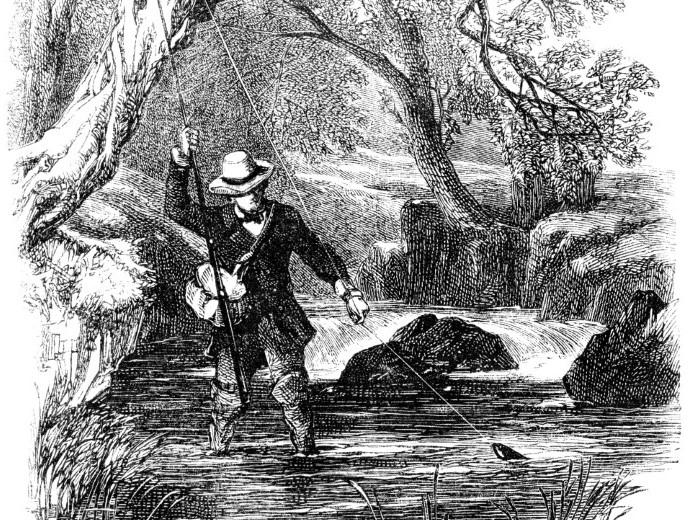
When was it in the grey shadows of history that a man first secured a few feathers and maybe a little fur to a primitive hook and used it to catch a fish? Perhaps it started with a guy watching fish eat flying bugs and thinking, “If I could catch one of those bugs and tie it to a hook . . .” To his delight, fish ON! And what if that fish escaped? Did the fisher run home and tell his friends about it? And along the way, did he add five inches to the one that got away? What we may have here is the first fly, but almost certainly not the first fisherman’s lie.
One of the earliest mentions of fly fishing in the historical record was in the 2nd-century writings of Roman Claudius Aelianus, who described anglers using an artificial fly to catch fish from the Astraeus River of Macedonia. Aelianus observed how anglers secured dyed wool and a couple of feathers to a hook and caught fish. Centuries later, fly fishing was exported to Europe sometime in the Middle Ages, where it caught on in the British isles in about the 15th century and soon became known as a gentleman’s sport.
Today’s fly fishers might look aghast at the equipment and methods used by the early adopters. Rods were often cut from straight branches, about six feet long and thicker at the base than at the tip. A line of six- to eight feet made from braided horsehair was attached to the tip. Offerings were simply drifted downstream. Hooks were carved from bone or crafted from metal. For a fly, miniature donuts were tried at first but no matter how artfully presented to them, fish rejected them. Consequently, a hook was adorned with feathers and animal hair and fish were fooled.
In the 18th century, fly fishing caught on in America. Immigrants, pioneers, and settlers adopted the sport and democratized it. No longer the exclusive purview of the genteel, it was often subsistence fishing; catch-and-eat overruled today’s catch-and-release ethic. At first, most of the fishing tackle was imported from England, but following the application of American ingenuity, small-scale, home-based industries sprung up to supply the needs. The first fly fishing clubs were organized about this time.
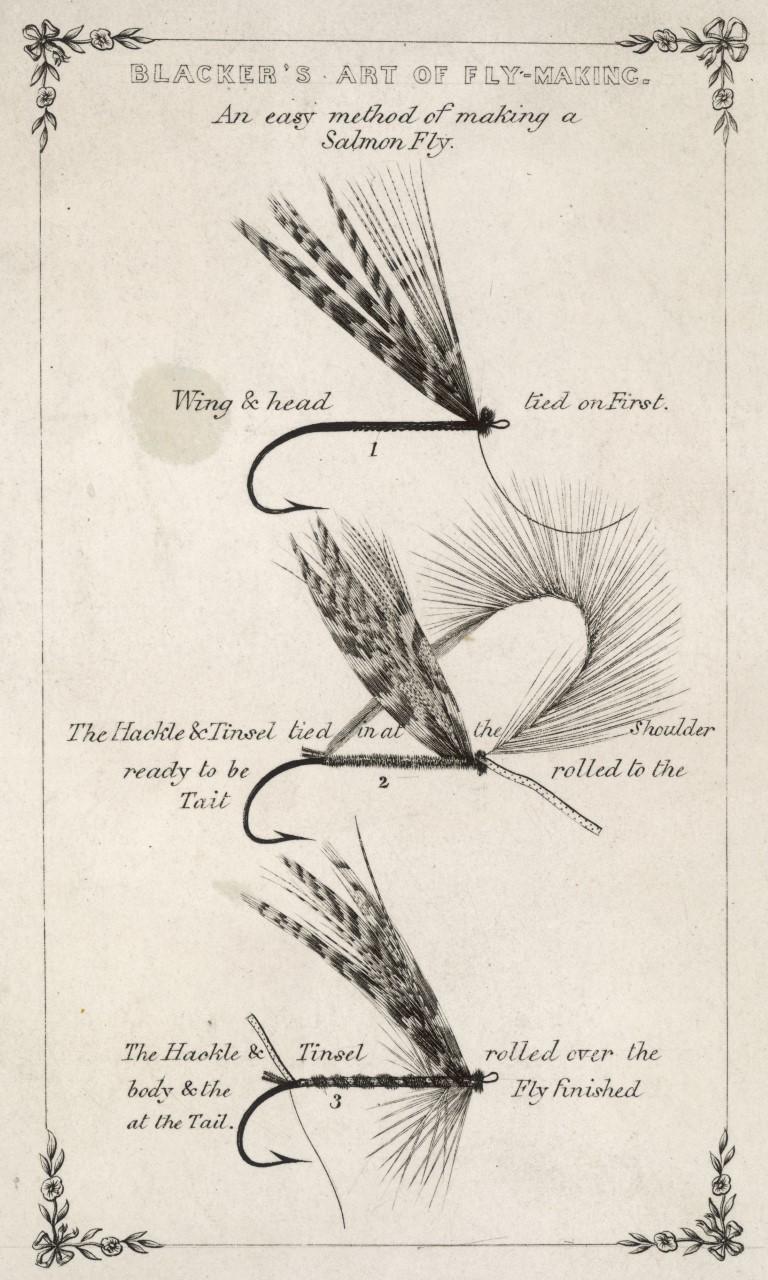
The 19th century brought many improvements. The first dry flies were created, as were fishing rods made of bamboo or cane. Rods made of split bamboo were a huge improvement over green tree branches, but they were expensive. However, fly lines were still made of braided horsehair and attached to the tip of the rod. The newly-created dry flies were dabbed on the surface or allowed to ride the stream’s current.
However, although the creation of dry flies proved popular, a problem soon surfaced. A dry fly must stay dry to attract fish, and the dry flies of the era quickly became water-logged and sank. A number of solutions were devised; paraffin dissolved in kerosene, and vaseline dissolved in gasoline were tried. The fly was treated with the floatant, and the carrier allowed to evaporate. If not all of the carrier evaporated, an oily slick often surrounded the fly, although it’s reported that the fish didn’t seem to mind.
Braided silk lines became available in the early 19th century and quickly replaced horsehair lines. But silk lines presented the same problem as dry flies. Keeping them afloat was a challenge. Silk lines sank quickly if not dressed with some kind of water-resistant product. Various things were tried to overcome this issue, from grease rendered from animals to concoctions of petrochemicals. Nevertheless, no matter how well they were dressed silk lines took on water like a leaky boat. They had to be pampered more than a newborn baby (pun intended). And the line had to be dried regularly.
However, the invention of silk lines allowed the creation of longer lines. Rods lengths were increased to 8-11’ to accommodate the longer silk lines available. Fly fishers desired longer lines yet, but how to handle lines that could stretch to 20’ or more? A 20’ fly rod was just a bit unwieldy. The fly fishing reel as we know it today was invented in the latter part of the 19th century and now came into wide use. The first fly fishing reels were simple line holders. They often rotated freely on an arbor. There was no drag or anti-reverse mechanism. They were usually carved from wood and therefore required careful maintenance to preserve and prolong their lives. But the reels accommodated the longer lines desired. In the early 20th Century, Hardy Reels of England introduced reels with drags and quickly dominated the scene. Drags prevented the unwanted unraveling of the line from the reels and provided a method to slow or stop a running fish determined to be the one that got away. Hardy Reels were often paired with the best split bamboo rods of the time, and a Hardy reel matched with a cane rod was an outfit of which to be justifiably proud.
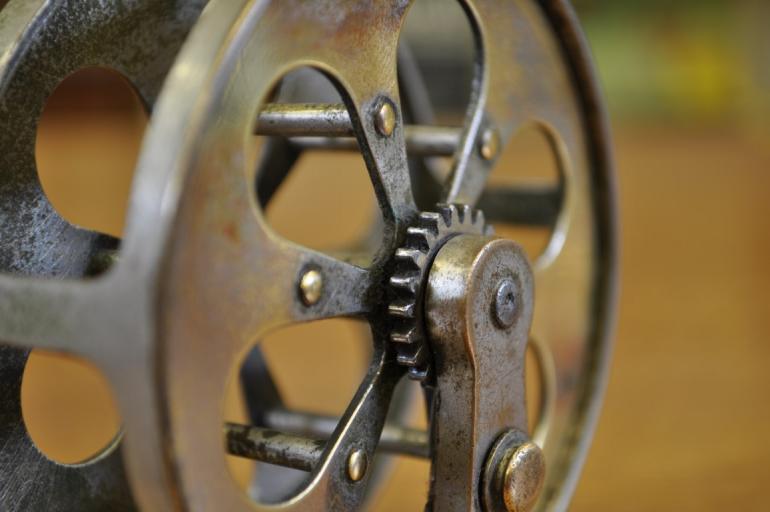
Photo by Michael Raether
For all of their issues, silk lines worked and are still used by some today. Along with silk fly lines came leaders made of silk called “gut.” Gut leaders were made from silkworms by making a small incision just behind the head to reveal the silk glands, then submerging the poor silkworm in a solution of salt and vinegar. The silk was slowly drawn from the silk glands, and as it was extracted the material hardened into threads. The longer the silk gut remained in the solution, the stronger it became therefore increasing the breaking strength.
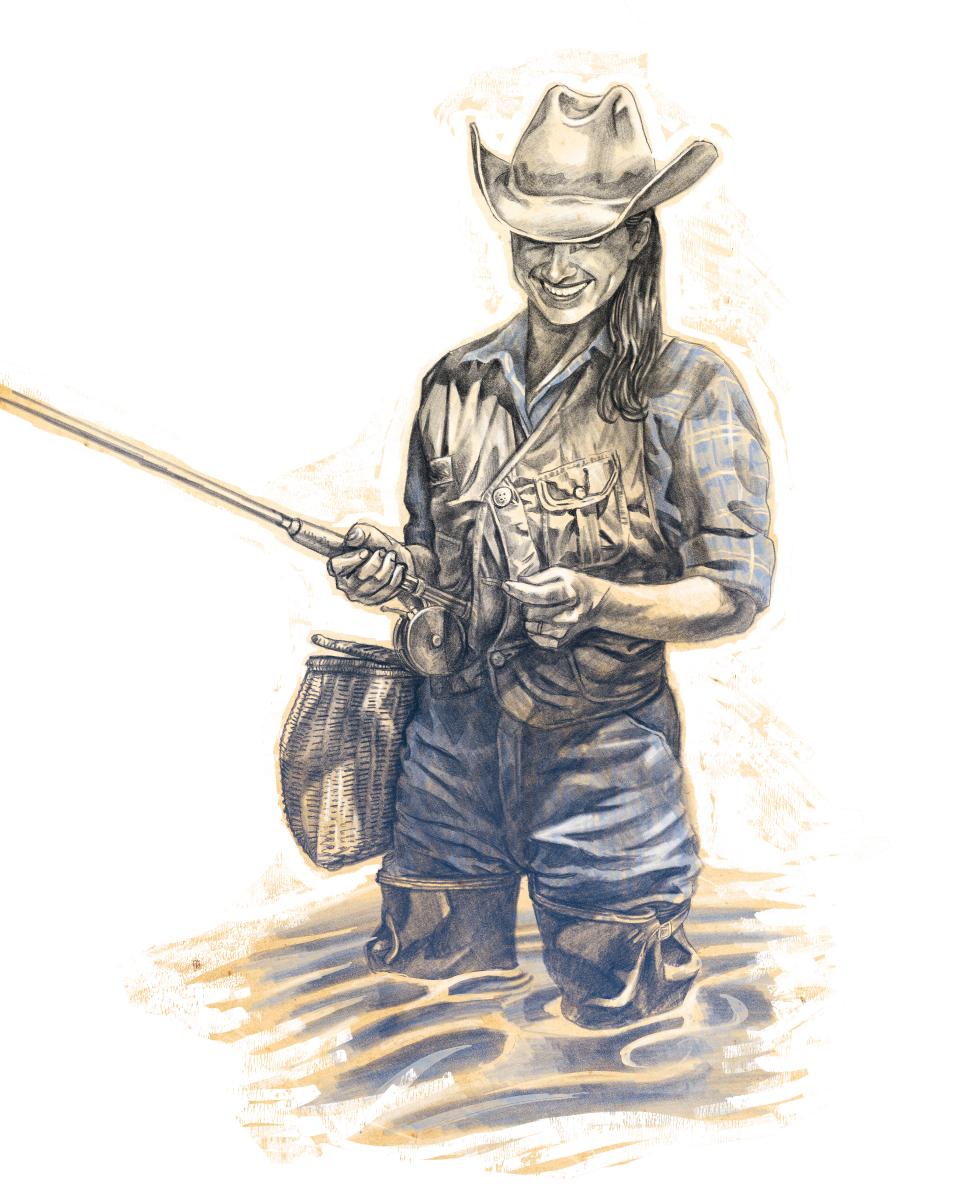
However, the extracted silk threads were not very long, perhaps only 15”. This necessitated tying the lengths of silkworm gut together to make leaders of a needed length. Gut leaders came with their own share of problems. Gut leaders had to be wetted before use, or they became brittle and broke easily.
Just prior to WW2, nylon was developed, and with it, the birth of modern fly lines and leaders. Leaders could now be made from nylon monofilament for which the silkworm was surely grateful. Essentially made of plastic, braided nylon fly fishing lines were impervious to water, solving the problems associated with silk lines and leaders. Later, fly lines were coated with a slick plasticized covering that slid easily through rod guides and allowed a quick pickup from the water’s surface when the fly line was recast.
The WW2 era also birthed fiberglass, which made fiberglass rods available and much less expensive than split cane rods. Fiberglass rods were not only less costly but also much more durable than cane. But once again, a problem surfaced. A particular fly rod became clumsy if the rod didn’t match the fly line. The problem was solved by cooperation between fly line and fly rod manufacturers. As a result, a standard was developed that is still used today.
In the mid-1970s, the first graphite fly rods came on the market. They were lighter than fiberglass, more sensitive and responsive, but were also more delicate. On one river float, I learned about just how delicate: feeling the need to put ashore for a few minutes, I laid my graphite rod across the tubes of my inflatable and exited the boat. My dog exited behind me, stepped on my graphite rod, and shattered it.
For fly fishers, we are living through the good old days. Today’s innovations in fly rods, lines, and leaders have made fly fishing accessible to almost everyone. Fly reels have grown from simple line holders carved from wood to constructions of ultra-light and durable alloys with drags almost capable of stopping a fast freight train. Fishing flies, once made almost exclusively from natural materials such as animal hair and feathers, now incorporate such synthetic materials as dyed imitation yarn, mylar, and foam rubber. In addition, in our environmentally conscience times, lead wire has been replaced by lead-free wire for weighting flies designed for subsurface fishing.
But regardless of the innovations over the centuries, the quest for fly fishers—and all fishers for that matter—remains the same: to find the biggest fish and catch them.
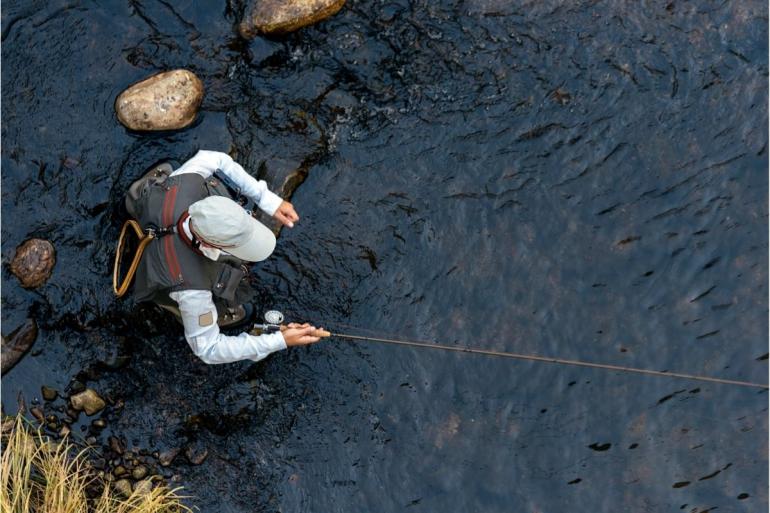






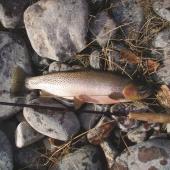





Leave a Comment Here